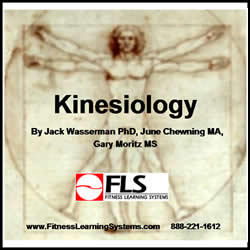
ISBN# 978-1-935746-01-0
Course Description:
Increase your understanding and professionalism by expanding your knowledge in human movement. This course contains text, photos, interactive graphics, and video to help you deepen your knowledge for the fundamentals of human movement and the unique way each person moves. Make each exercise work for your clients. Develop your ability to effectively understand and modify exercises in order to personalize an exercise movement or routine.
Education Level: Beginner, Intermediate, Advanced
Prerequisites: None
Successful completion of the quiz is necessary to receive Continuing Education Credit.
Approved for:
| 0.3 | Action Personal Trainer Certification |
| 4.0 | American College of Sports Medicine (ACSM) |
| 0.4 | American Kinesiotherapy Association (COPS-KT) |
| 0.4 | International Accreditors for Continuing Education and Training (IACET) |
| 0.4 | National Association for Fitness Certification (NAFC) |
| 2.0 | National Council on Strength & Fitness (NCSF) |
| 0.5 | National Federation of Professional Trainers (NFPT) |
| 4.0 | National Strength Professionals Association (NSPA) |
| 4.0 | YMCA |
Course Objectives:
After completing this course you will be able to:
- Differentiate between physical activity and exercise.
- Describe the benefits of cardiorespiratory exercise and resistance training.
- List and describe the 5 components of physical fitness.
- Explain the 6 principles of exercise training.
- List and discuss the ACSM guidelines for physical activity, cardiorespiratory, resistance, and flexibility training.
- Identify the major bones in the human skeleton, and discuss the structure of bone and how it is formed.
- Identify the major muscles in the human body, and discuss the 5 characteristics and structure of muscle, and describe 4 muscle actions.
- Identify 6 joint structures in the human body.
- Describe the 4 planes of motion and 3 axes of rotation in human movement.
- Identify and describe movement at the primary joints in the human body including the plane of movement, axis of rotation, and muscles used.
Other Courses by this author:
System Requirements to View This Course
This course is tablet enabled and can be viewed on an iPad or Android tablet as well as a PC or MAC Computer
